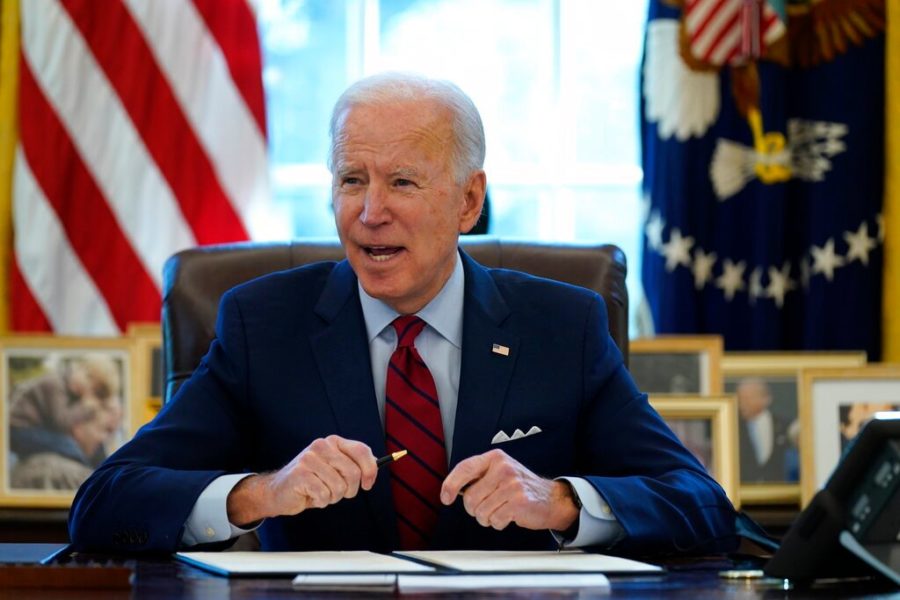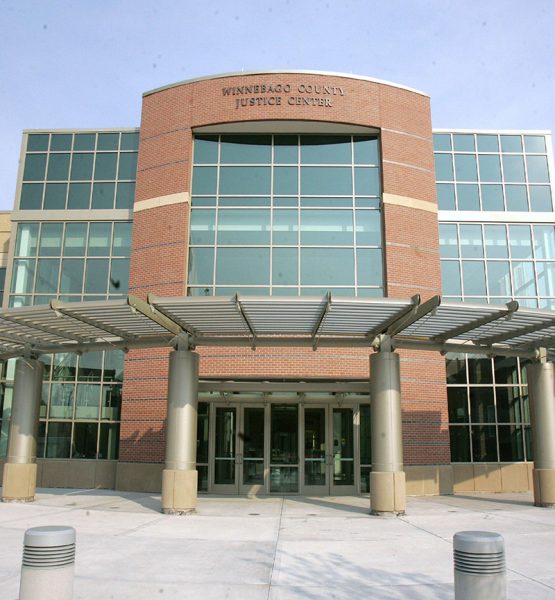The American Jobs Plan: its immediate and long-term effects
President Joe Biden signs a series of executive orders on health care, in the Oval Office of the White House, Thursday, Jan. 28, 2021, in Washington. (AP Photo/Evan Vucci)
At a price of $2.2 trillion spanning 10 years, the American Jobs bill has become the largest investment in the United States since World War II. If passed, the bill has the potential to create millions of high-paying, skilled jobs, bring high technology to all citizens, and rebuild the crumbling infrastructure.
The importance of rebuilding America’s infrastructure has been discussed since President Clinton was in office. Pushed by President Obama but denied by the McConnell/GOP-controlled Senate, touted as one of his to-be accomplishments by President Trump, investing in the infrastructure has not occurred since the 1960’s with President Kennedy’s space program and President Eisenhower’s interstate highway system.
According to the Congressional Budget Office (CBO), investment in public transportation and infrastructure since the 1960’s has diminished to less than 60 percent of public spending. With the quality of its overall infrastructure, according to the White House, the United States ranks 13th in the world compared to other developed countries. From its crumbling roads and bridges, lack of high-speed internet, vulnerability of the electric grid, lack of quality housing, and the possible collapse of hospitals due to the COVID-19 pandemic, the wealthiest nation no longer leads in key fields such as manufacturing, training, or research and development, being surpassed by rivals in some areas by China in recent years.
To offset the costs, the American Jobs bill also serves as a tax restructuring bill. President Biden promises the bulk of money to pay for the American Jobs bill will be borne by raising the tax rate on corporations from the current 21% to 28%, having corporations “pay their fair share,” as Mr. Biden so often states. The fact that corporations will shoulder the most burden makes the bill even more popular with the American public, which now supports the bill two to one, including most Democratic and over half of Republican lawmakers in Congress.
Although the bill spans a 10-year period of building and rebuilding, the effects will extend more than a generation. One part of the bill reduces carbon-emissions to levels not seen in over 200 years, from mass production of all-electric vehicles to ensuring all communities have safe, clean drinking water. As an overview, President Biden’s plan with the American Jobs bill will rebuild, reinvent, and reimagine the entire country:
- Repair highways, fix roads, rebuild bridges, upgrade ports, airports and transit systems.
- Deliver clean drinking water, a renewed electric grid, and high-speed broadband to all Americans.
- Build, preserve, and retrofit more than two million homes and commercial buildings, modernize our nation’s schools and child care facilities, and upgrade veterans’ hospitals and federal buildings.
- Solidify the infrastructure of our care economy by creating jobs and raising wages and benefits for essential home care workers.
- Revitalize manufacturing, secure U.S. supply chains, invest in R&D, and train Americans for the jobs of the future.
- Create good-quality jobs that pay prevailing wages in safe and healthy workplaces while ensuring workers have a free and fair choice to organize, join a union, and bargain collectively with their employers.
Source: The White House Briefing Room, The American Jobs Plan, March 31, 2021. Statements and Releases











